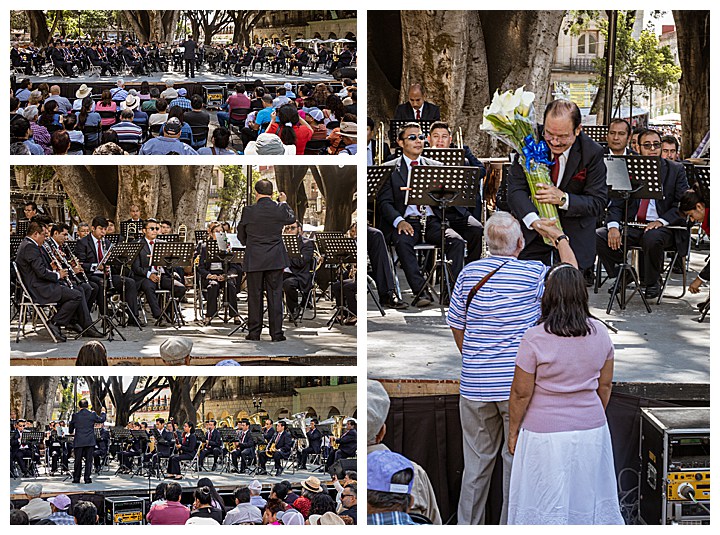
The symphony is free in Oaxaca. However, you must get advance tickets to see it, and by the time we tried, all those tickets were “gone”. We were told later that tickets were available for a 50 peso bribe (about USD $2.50), or you could stand in the long line the day of the concert. Fortunately, the Oaxaca State Band was also giving a free concert in the park at the Zócalo Sunday afternoon, just 10 blocks from where we were staying. We opted to go listen to them instead.
Essentially the difference between the symphony and the band is that the latter has no string instruments. Though we did not have an opportunity to listen to the symphony while in town, the quality of the band was outstanding, We stood and listened for about half an hour, then went into a nearby restaurant and sat on a balcony overlooking the band, listening to the remainder of the performance while having an excellent lunch. We looked at each other in amazement – here we are in short sleeves at the end of November sitting outdoors listening to free music!
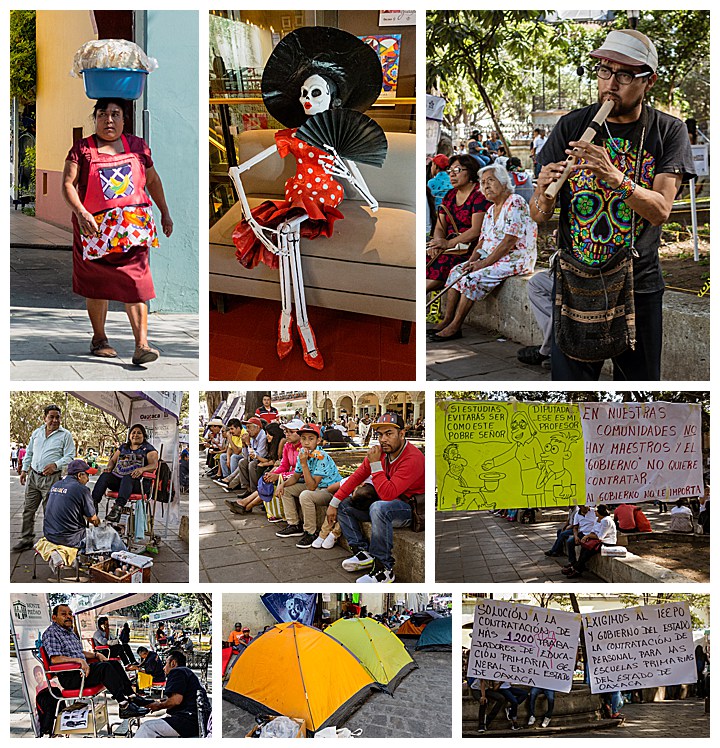
After lunch, we wandered around downtown. The park was filled with people, just as parks are in Cuenca. Similar to yesterday, we found some teachers protesting, this time with signs (center-right and lower-right), which we could mostly read and get a better understanding of the nature of the protests.
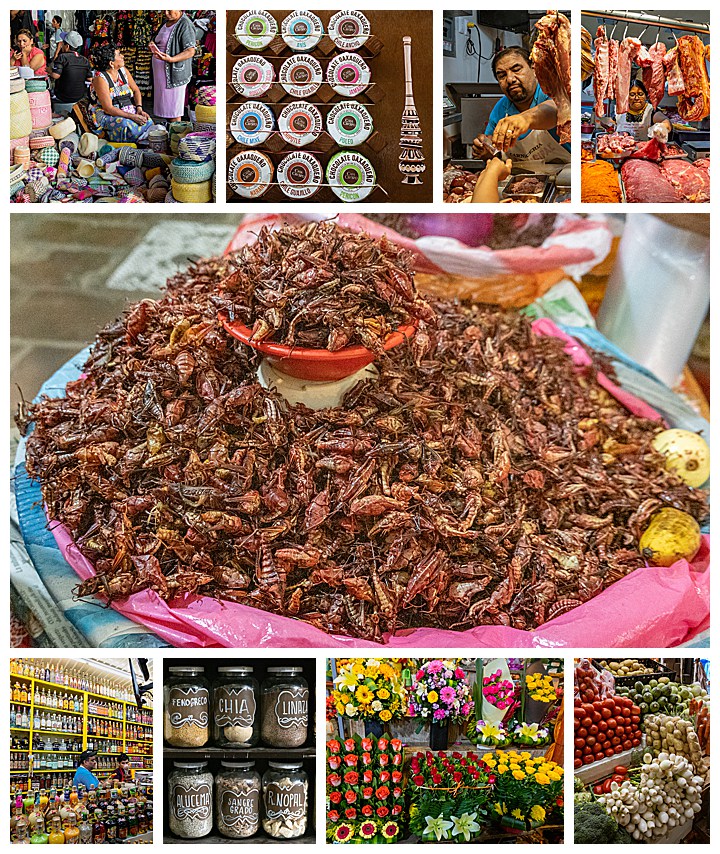
We also visited the largest mercado in the city, Benito Juarez, which is near the Zócalo (center plaza in town). Dried grasshoppers (center) were sold by many vendors. The chocolate bars sold (upper-center) are actually produced by Casa Crespo, from the Crespo cooking school mentioned yesterday.
Some spices could be purchased out of bags, as we see in other mercados. However, there were also vendors with a wall full of jars of specialty spices (bottom-second). Additionally, there were more than a dozen fully stocked liquor store vendors (lower-left) in this massive mercado.
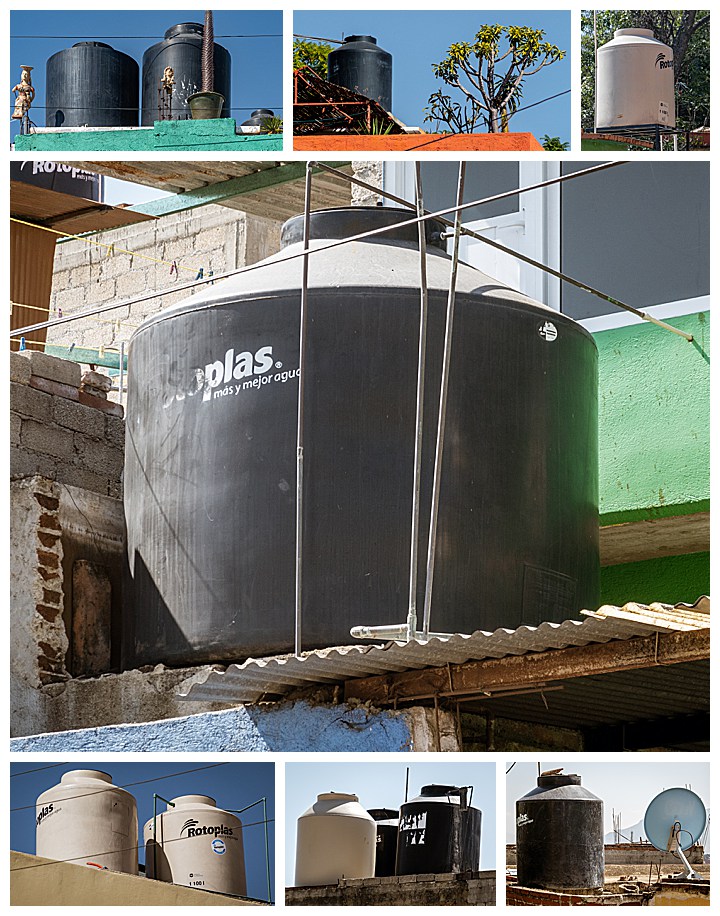
One of the oddities we have discovered in Oaxaca is that every home has a plastic water tank on the roof. These tanks are plumbed, but the water must be turned on manually to fill them. In our AirBnb, we must fill the tanks every two days, or we will have no shower or toilet water. We know the tanks are full when the water pours over the edge of the roof onto our garden below, which tells us it is time to turn off the water feed. The water pressure in the homes is very low, since it is only a gravity feed from the roof of the building.
As we walked around town, we saw these plastic tanks on every roof. There are two brands, one black and one off-white. These can be bought in many hardware stores in town, but other than the color, there does not appear to really be any difference between them.
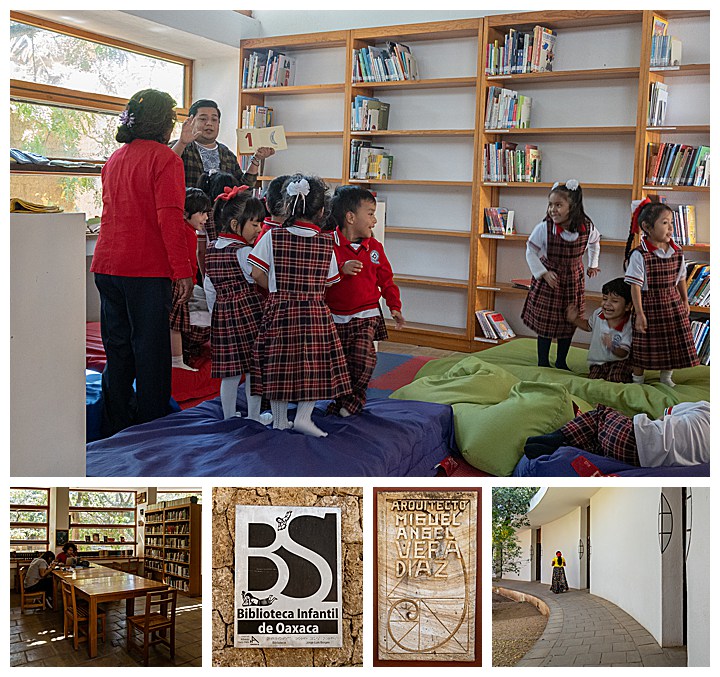
At one point in our wandering, we came across a Biblioteca Infantil (children’s library). The architecture looked organic, so we wandered in. We discovered a very well designed, modern, airy building with various rooms that could be reached from outside (lower-right) or internal passageways. Each room was separated by use and age group. Several rooms had middle and high school students studying (lower-left).
In one room, we found a classroom where preschoolers were being taught to count. They bounced and climbed over soft mattresses, as they repeated after the teacher (top) “uno, sol, dos, luna, tres, pisces.” In English, that is one, sun, two, moon, three, fish – no idea how those subjects past one relate to the numbers, but the kids were gleefully reciting them as the teacher would show pictures in his book. You couldn’t help but smile as you saw the kids learning while squealing and having fun on the cushions.
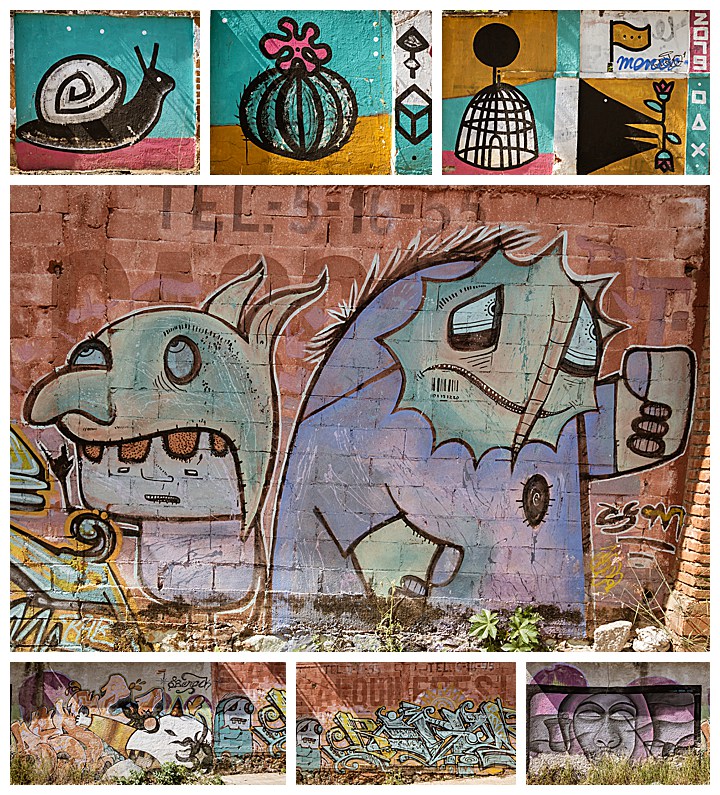
Street art is very common around town, though it is not as sophisticated as many of the murals in Cuenca. Above is a sampling from Xoxomilcho, one colorful neighborhood that we were exploring today (there will be more in the final wrap-up post from Oaxaca).
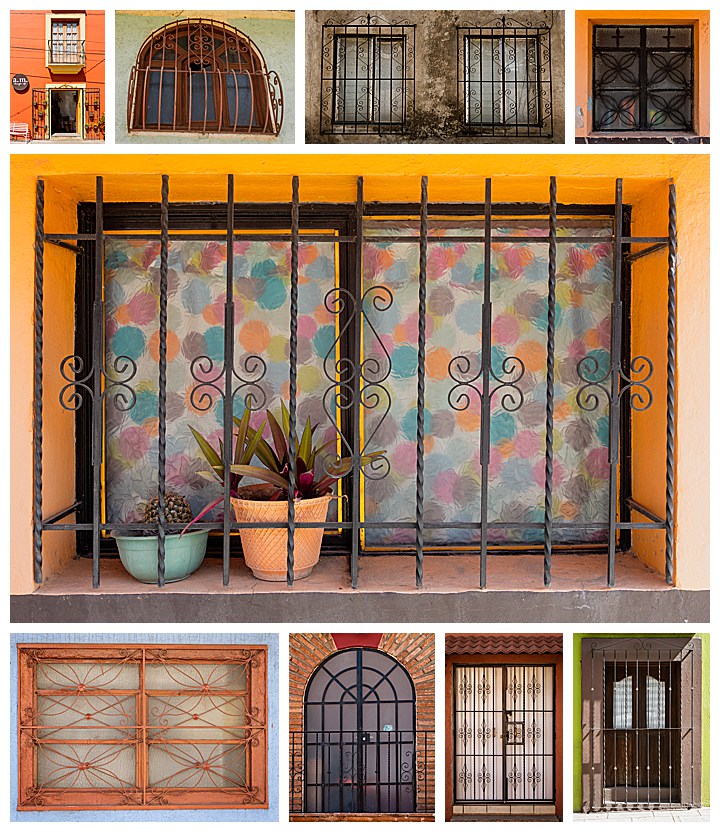
We also noticed that most of the windows have metal grills over them. My first reaction was that they indicate a crime problem. Looking closer though, I also noticed that many are quite decorative, and most are unique from their neighbors. Thus, they give protection against crime, but also add to the creativity of the area.
At the end of the day, we were heading home, and came across this lively scene. A small street band had started on the street. Others gathered quickly to listen and to dance — some of them quite enthusiastically!